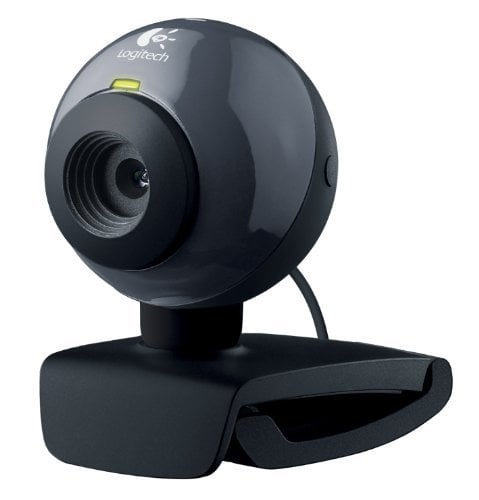
- TURN ON MY LOGITECH WEB CAMERA HOW TO
- TURN ON MY LOGITECH WEB CAMERA MOVIE
- TURN ON MY LOGITECH WEB CAMERA SOFTWARE
- TURN ON MY LOGITECH WEB CAMERA PC
- TURN ON MY LOGITECH WEB CAMERA ISO
TURN ON MY LOGITECH WEB CAMERA HOW TO
Now that we have our color temperatures and diffusion out of the way, let’s talk about how to set up your lights so you are lit properly for the webcam. Obviously there are also more professional ways to diffuse light but these are not available to everyone. I personally use a couple of cloths of white t-shirt fabric stretched over my lights. The more diffusion is added, the softer the shadows. The more focused a light source is, the harder the shadows. To generate softer shadows you have to diffuse your light. If you want to look more mainstream use softer shadows and light yourself from more angles. If you want an dramatic look, use hard shadows and light yourself from one side.

TURN ON MY LOGITECH WEB CAMERA MOVIE
Harder shadows and lighting from the top is used to depict movie villains for example. Generally 5500 is considered noon daylight. Most lights can deliver different color temperatures ranging from 2500 (sunset) to 10000 (blue sky).

Close your blinds and go for light bulbs or LED lights only. I’d suggest not to use sunlight as it is hard to control.
TURN ON MY LOGITECH WEB CAMERA SOFTWARE
White balancing your camera in software is very important in this case. When combining both you can green a green overtone. Generally light bulbs are yellow and sun light is blue. There are different types of light that need different white balance settings. To overcome this limitation you have to blast the filming subject (you) with light. As mentioned before, webcams are not great in low light situations. Lighting is by far the most important part of your setup if you want to make your webcam image look good.

If you have a proper camera it just works better. All techniques described below are applicable to any sort of camera setup. In this post I’ll outline some tips and tricks you can apply to make your webcam look better. If webcams get too expensive, nobody will buy them. But if you have to spend that much, why not just buy a real camera? The actual market for webcams is likely just for conference calls, skype with family (if you don’t have a laptop or a phone) or content creators who are starting out. It’s definitely possible and there are niche brands that build 1000 euro webcams. But why aren’t there any amazing webcams out there? But the damage is usually already done at this stage.
TURN ON MY LOGITECH WEB CAMERA ISO
You have no access to aperture, shutter speed or ISO though.
TURN ON MY LOGITECH WEB CAMERA PC
Due to the compressed stream the PC hardly needs any processing to show the video. It mainly compresses the video feed so it’s streamable over the USB connection. Most webcams also have some sort of processing power on board but it always kind of sucks. Phones have bigger sensors, better lenses and sometimes even a dedicated hardware chip just for image processing. It’s where all the advertisement dollars go. The camera on a phone is almost its main feature nowadays. But why does my phone camera look so good?Ī real camera or a phone have much more computational power. A 200 euro webcam isn’t that much better than a 50 euro webcam. Not even close.Ĭombine a small sensor, a crappy wide angle lens and a shallow depth of field and you have the average webcam. In webcams autofocus works from about 1cm until 60cm (2feet). The more light a lens can capture (aperture) and the bigger the image sensor, the more bokeh you can expect. If you check out high quality content there is always a nice bokeh effect. Even with studio lighting the image can appear grainy. The webcam’s physical limitations make it terrible in low light situations. If there wasn’t enough against the webcam form factor: the lenses in webcams are generally cheap and shitty. The problem is, the wider you go, the less sharp the picture gets. If a 18mm lens is the equivalent of an 126mm lens it means that something we consider normal on a SLR camera is extremely zoomed in on a webcam. Due to the high crop factor an extremely wide angle lens is needed to get a good visual at that distance. The idea is that the crop factor plays a huge role.Ī webcam tends to be positioned around 40cm (1.3 feet) from your face. In the case of a webcam’s image sensor size and its crop factor a normal 18mm lens is the equivalent of a 126mm zoom lens. Crop factor is a term that describes the difference between your camera’s sensor size and a traditional 35mm film frame. Almost all webcam image sensors are somewhere between 1/4" and 1/3" in size and they have a crop factor of around 7. You can watch this YouTube video or you can read the article below that has more details. Someone in the field of cameras will probably pick this apart on details. The webcam form factor has a bunch physical challenges that limits them from producing a good looking picture.īeware, the ideas outlined below are based on my experience and are by far not comprehensive or complete. So why do webcams suck? It’s their design. Even the most expensive consumer webcams produce a “meh” result. If you have used a webcam before you know what it means to look like shit on camera.


 0 kommentar(er)
0 kommentar(er)
